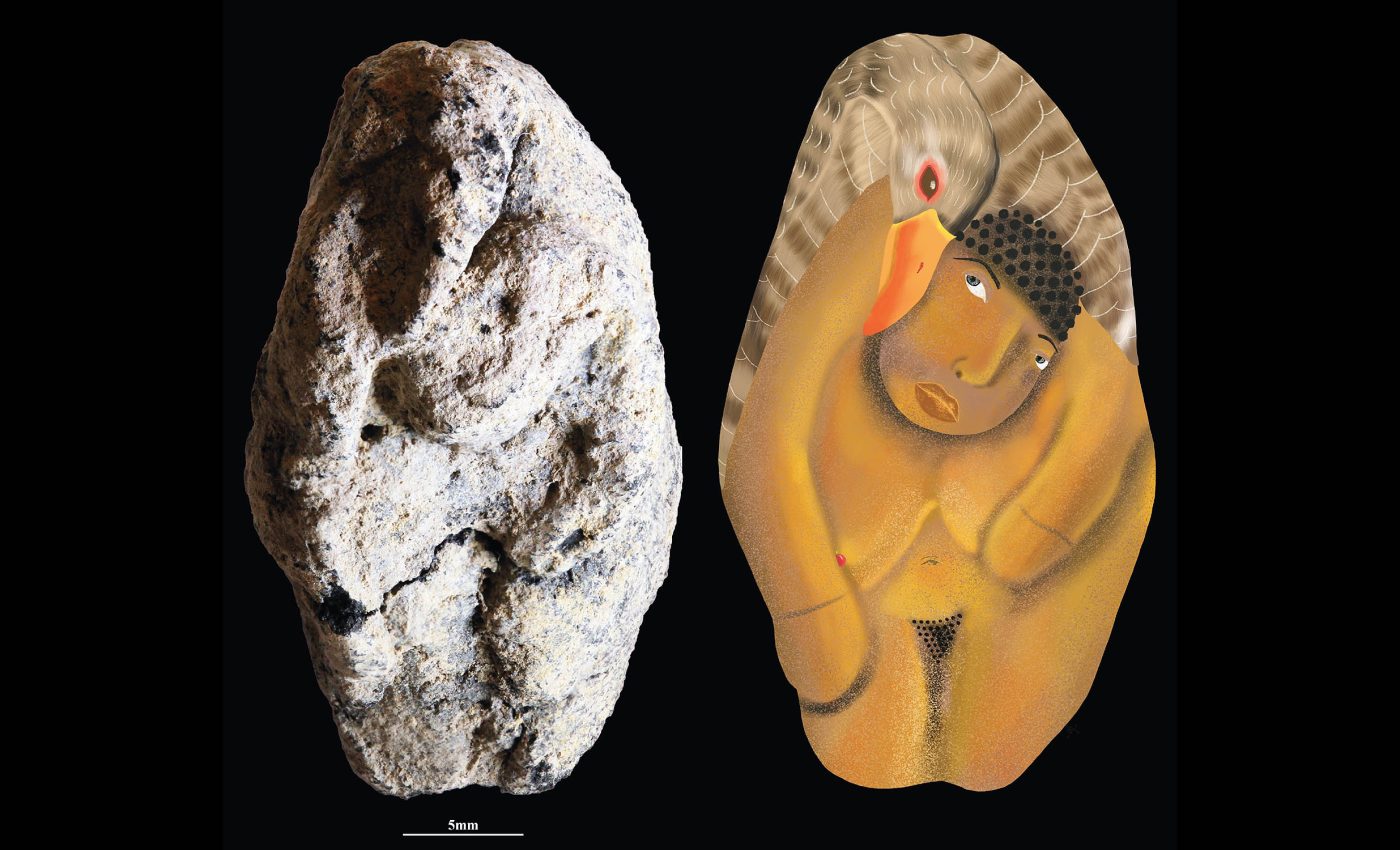
Ancient figurine of a woman and a goose shows how prehistoric humans explained life through art
About 12,000 years ago in northern Israel, an artist shaped a tiny, clay statue of a crouching woman and a goose. In a recent study, researchers argue that this 1.5 inch (3.8 centimeter) figurine captures an early story about how people and animals shared a spiritual world.
The figurine comes from a village called Nahal Ein Gev II, which sat above the Sea of Galilee in northern Israel. It captures a moment when people in this region were settling into permanent homes, even before farming had fully arrived.
Natufian figurine story
Archaeologists place the site within the Late Natufian culture, an early village society that settled parts of Southwest Asia before the advent of agriculture.
Work at Nahal Ein Gev II shows a cluster of stone houses and graves near the lakeshore, according to a detailed analysis.
The work was led by Dr. Laurent Davin, an archaeologist at the Hebrew University of Jerusalem (HUJ). His research focuses on how early communities used objects and images to express belief and social change.
The team found that the figurine was modeled from local clay and baked at about 750 degrees Fahrenheit (400 degrees Celsius).
That level of controlled pyrotechnology, deliberate use of fire to transform materials, shows skilled handling of heat long before regular pottery workshops.
The artwork turned up inside a semicircular stone building about 16 feet (5 meters) wide that also held carefully arranged human burials.
Archaeologists interpret the mix of graves, offerings, and the figurine as evidence that people used this structure for repeated rituals rather than everyday living.
Deeper meaning in the clay
The tiny sculpture shows a nude woman crouching low while a goose rests across her back in a mating pose. The artist rendered her limbs, hair, and torso with careful curves and shadows to create depth and perspective, an illusion of three dimensional space.
The bird does not lie limp like prey, and there are no weapons carved into the scene. At the site, faunal remains (animal bones left from meals) indicate that people used geese for food and sometimes turned them into ornaments or feathered decorations.
The woman appears calm rather than terrified or in pain, which makes the encounter feel more like a story than a real event.
Researchers think the artist was portraying a myth or vision that linked a human figure with an animal spirit, not a scene from chores.
By molding the clay so that light catches ridges and hollows, the sculptor made the little statue feel surprisingly lifelike.
Similar tricks of volume and shadow become more common in later Neolithic clay figures, so this piece pushes those artistic experiments back in time.
Life in a Natufian village
The Natufian period in this region ran from roughly 15,000 to 11,500 years ago and stretched across parts of the eastern Mediterranean.
Scholars using research describe many of these communities as sedentary, living most of the year in one place while hunting and gathering.
Villages from this culture often contained round, stone buildings, shared cemeteries, and areas for making beads or tools.
At Nahal Ein Gev II, excavators also uncovered lime plaster floors and specialized craft spaces, which suggest long-term investment in the place.
Animal bones from Natufian sites suggest a mixed diet that included gazelles, birds, fish, and other small game. One broad study argues that people in this period intensified their use of resources as villages became permanent.
At Nahal Ein Gev II, goose bones and feathers appear in deposits that also include jewelry and other special items. That combination hints that the bird mattered, not just as food but as a creature linked with status or ceremony.
Geese, ritual, and early myth
Anthropologists use the term animism – belief that animals and objects have spirits – to describe many early religious systems. In this figurine, the close pose of woman and goose fits that idea of shared spiritual agency between humans and other beings.
Because goose parts show up with jewelry and ritual objects, many archaeologists see the bird as part of a shared symbolic vocabulary.
The figurine may have turned that symbol into a character within a story about identity, fertility, or passage between worlds.
“The NEG II figurine captures a transformative moment. It bridges the world of mobile hunter gatherers and that of the first settled communities. Showing how imagination and symbolic thinking began to shape human culture,” said Professor Leore Grosman, co-author of the study.
Lessons from the Natufian figurine
“This discovery is extraordinary on multiple levels,” said Dr. Davin. He also argues that it is the earliest figurine ever found that shows a person in direct interaction with an animal.
The figurine also stands out as the earliest naturalistic image of a woman yet identified in Southwest Asia.
Researchers used microscopic, chemical, and dermatoglyphic analyses – studies of fingerprints and skin patterns – to confirm how the clay was shaped, fired, and painted.
Together the evidence shows that people in this village used clay not only as material but as a way to carry stories and beliefs. That makes the woman and the goose a rare record of early storytelling, a moment when art, ritual, and daily life began to intertwine.
For modern readers, the figurine offers a direct trace of how people once tried to understand their place in a changing world.
Long before cities and writing, small communities were asking questions about life, death, and the unseen forces they felt around them.
The study is published in the journal Proceedings of the National Academy of Sciences.
Image: Natufian clay figurine from Nahal Ein Gev II, accompanied by artistic reconstruction. Credit: Laurent Davin
—–
Like what you read? Subscribe to our newsletter for engaging articles, exclusive content, and the latest updates.
Check us out on EarthSnap, a free app brought to you by Eric Ralls and Earth.com.
—–













